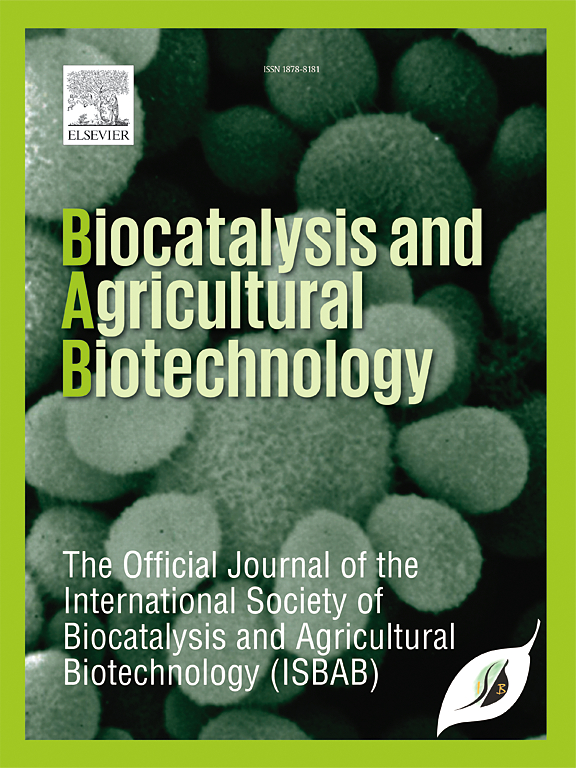藻类 Alsidium triquetrum (SGGmelin) Trevisan 的粗提取物对埃及伊蚊的植物化学、细胞毒性和杀虫作用
IF 3.4
Q2 BIOTECHNOLOGY & APPLIED MICROBIOLOGY
引用次数: 0
摘要
本文章由计算机程序翻译,如有差异,请以英文原文为准。

Phytochemical, cytotoxic, and insecticidal effects of crude extracts of the alga Alsidium triquetrum (SGGmelin) Trevisan on Aedes aegypti
Aedes aegypti, the yellow fever mosquito, is the main vector of several arboviruses. It represents a public health problem and can develop resistance to chemical insecticides over time, requiring new formulations of ecologically friendly larvicides for its control. Seaweed is an abundant source of phytochemicals with diverse chemical compositions and is a prospective natural alternative to commercial insecticides. In this study, we aimed to investigate the larvicidal efficacy of the seaweed Alsidium triquetrum against Ae. aegypti by evaluating the toxic, morphological, and enzymatic effects of the ethanolic (AE) and hydroalcoholic (AH) extracts of the seaweed. The chemical composition of the extracts was evaluated using high-performance liquid chromatography and liquid chromatography coupled with high-resolution mass spectrometry, and the toxic effects were investigated by assessing the larvicidal activity, morphology of the larvae, and in vitro toxicity, along with enzymatic tests. The AH and AE extracts comprised primary and secondary metabolites, including amino and fatty acids and other compounds. The insecticidal bioassays showed larvicidal potential against Ae. aegypti at all concentrations tested, reaching 100% mortality in 24 h for both extracts. Morphological analysis of the larvae showed damage to the abdomen, changes in colour, disruption of the midgut, and loss of gill leaflets. The extracts stimulated similar activity for the enzymes amylase, trypsin, and acetylcholine esterase at concentrations above 0.5 μg mL−1. The cytotoxicity of the algal extracts in vitro indicated non-toxicity at the concentrations tested. Therefore, both seaweed extracts are potential sources of new formulations for use as natural insecticides.
求助全文
通过发布文献求助,成功后即可免费获取论文全文。
去求助
来源期刊

Biocatalysis and agricultural biotechnology
Agricultural and Biological Sciences-Agronomy and Crop Science
CiteScore
7.70
自引率
2.50%
发文量
308
审稿时长
48 days
期刊介绍:
Biocatalysis and Agricultural Biotechnology is the official journal of the International Society of Biocatalysis and Agricultural Biotechnology (ISBAB). The journal publishes high quality articles especially in the science and technology of biocatalysis, bioprocesses, agricultural biotechnology, biomedical biotechnology, and, if appropriate, from other related areas of biotechnology. The journal will publish peer-reviewed basic and applied research papers, authoritative reviews, and feature articles. The scope of the journal encompasses the research, industrial, and commercial aspects of biotechnology, including the areas of: biocatalysis; bioprocesses; food and agriculture; genetic engineering; molecular biology; healthcare and pharmaceuticals; biofuels; genomics; nanotechnology; environment and biodiversity; and bioremediation.
 求助内容:
求助内容: 应助结果提醒方式:
应助结果提醒方式:


